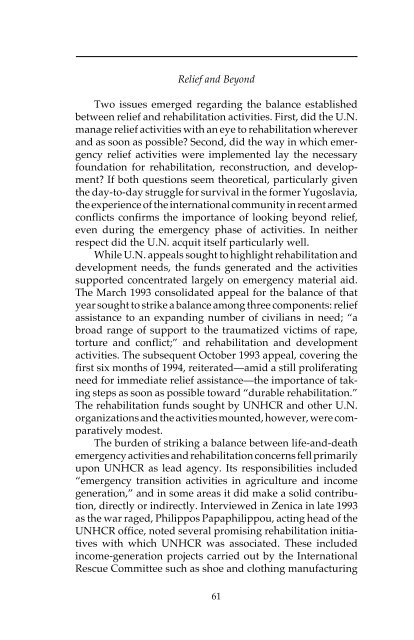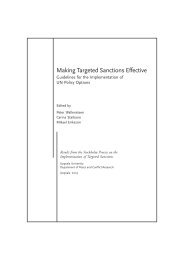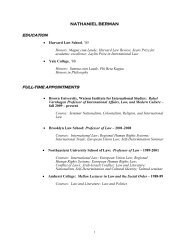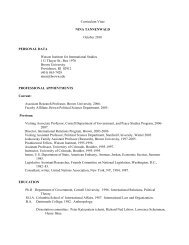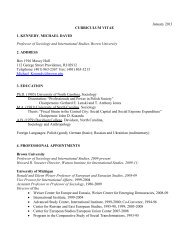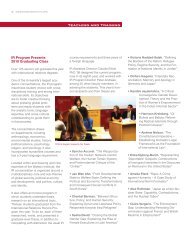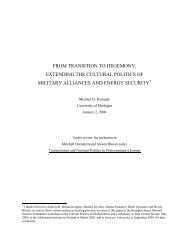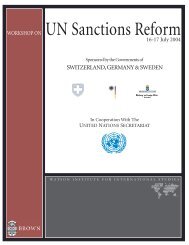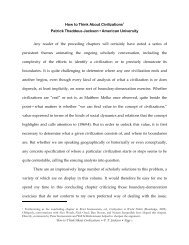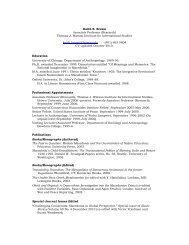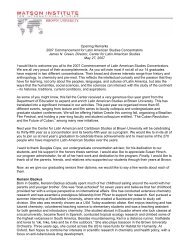op 18 front pages-converted - The Watson Institute for International ...
op 18 front pages-converted - The Watson Institute for International ...
op 18 front pages-converted - The Watson Institute for International ...
Create successful ePaper yourself
Turn your PDF publications into a flip-book with our unique Google optimized e-Paper software.
Relief and Beyond<br />
Two issues emerged regarding the balance established<br />
between relief and rehabilitation activities. First, did the U.N.<br />
manage relief activities with an eye to rehabilitation wherever<br />
and as soon as possible? Second, did the way in which emergency<br />
relief activities were implemented lay the necessary<br />
foundation <strong>for</strong> rehabilitation, reconstruction, and devel<strong>op</strong>ment?<br />
If both questions seem theoretical, particularly given<br />
the day-to-day struggle <strong>for</strong> survival in the <strong>for</strong>mer Yugoslavia,<br />
the experience of the international community in recent armed<br />
conflicts confirms the importance of looking beyond relief,<br />
even during the emergency phase of activities. In neither<br />
respect did the U.N. acquit itself particularly well.<br />
While U.N. appeals sought to highlight rehabilitation and<br />
devel<strong>op</strong>ment needs, the funds generated and the activities<br />
supported concentrated largely on emergency material aid.<br />
<strong>The</strong> March 1993 consolidated appeal <strong>for</strong> the balance of that<br />
year sought to strike a balance among three components: relief<br />
assistance to an expanding number of civilians in need; “a<br />
broad range of support to the traumatized victims of rape,<br />
torture and conflict;” and rehabilitation and devel<strong>op</strong>ment<br />
activities. <strong>The</strong> subsequent October 1993 appeal, covering the<br />
first six months of 1994, reiterated—amid a still proliferating<br />
need <strong>for</strong> immediate relief assistance—the importance of taking<br />
steps as soon as possible toward “durable rehabilitation.”<br />
<strong>The</strong> rehabilitation funds sought by UNHCR and other U.N.<br />
organizations and the activities mounted, however, were comparatively<br />
modest.<br />
<strong>The</strong> burden of striking a balance between life-and-death<br />
emergency activities and rehabilitation concerns fell primarily<br />
upon UNHCR as lead agency. Its responsibilities included<br />
“emergency transition activities in agriculture and income<br />
generation,” and in some areas it did make a solid contribution,<br />
directly or indirectly. Interviewed in Zenica in late 1993<br />
as the war raged, Philippos Papaphilippou, acting head of the<br />
UNHCR office, noted several promising rehabilitation initiatives<br />
with which UNHCR was associated. <strong>The</strong>se included<br />
income-generation projects carried out by the <strong>International</strong><br />
Rescue Committee such as shoe and clothing manufacturing<br />
61


